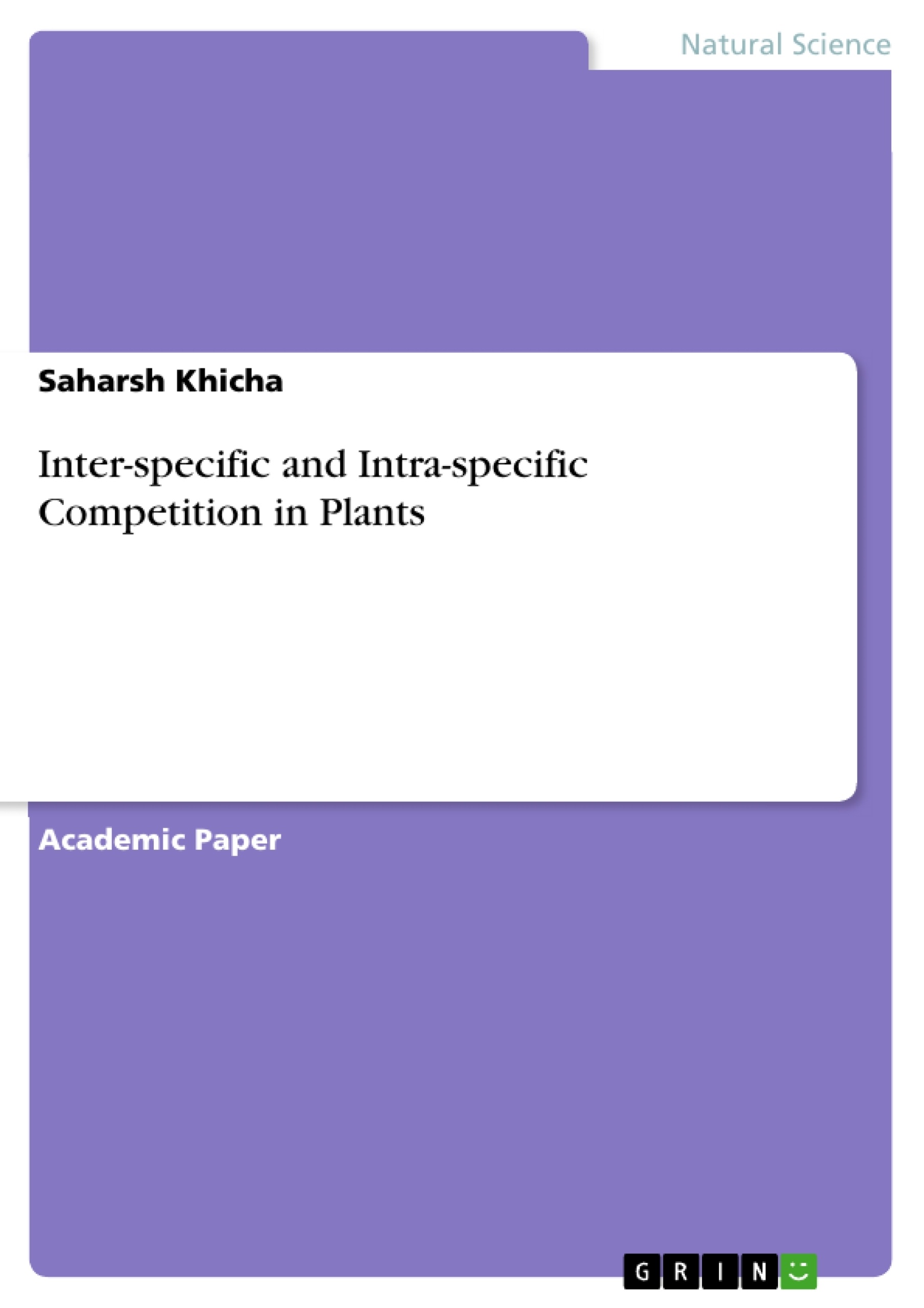This investigation was planned to work on the different types of competition and solve the problem of the farmers suffering from shortages of crop production. Hence, the research question was framed: "Does decreasing distance (70mm, 50mm, 30mm, 10mm) of the wheat (Triticum aestivum) and chickpea (Cicer arietinum) seeds sown in the presence (5% solution of urea) and absence of urea effects the shoot length (mm) due to inhibitory effects of intraspecific and interspecific competition between them?"
Crop production in India is labour intensive with limitation of scientific techniques. Unawareness in farmers for correct distance of sowing seed leads to low production of crops. This is due to overlapping of niche and thus the realised niche of a species which is the actual mode of existence resulting from adaptation and competition is developed.
A research was undertaken by in Journal of Experimental Botany which acknowledged various factors that affect the crop production and solutions to overcome competition. The research would make farmers aware of a major factor like competition, that should be considered while crop production.
Table of Contents
- Introduction
- Competition
- Interspecific competition
- Intraspecific competition
- Background Information
- Wheat (Triticum aestivum)
- Chickpea (Cicer arietinum)
- Urea
- Medium to grow seed
- Seed Germination
- Hypothesis
- Null hypothesis
- Alternate hypothesis
- Variables
- Independent variables
- Dependent variables
- Methodology
- Planning to introduce competition between growing plant
- Seed Selection
- Seed Bed (sand bed) preparation
- Seed laying for the interspecific and intraspecific competition
- Preparation of urea solution and its use
- Measuring the shoot length
- Data Collection
- Data Table
- Graphs
- Results
- Discussion and Evaluation
- Limitations
- Improvements
- Extension
- Bibliography
- Appendix
- Glossary
Objectives and Key Themes
The research aims to investigate the impact of decreasing distance between wheat and chickpea seeds, both with and without urea, on the shoot length of these plants. The study explores the inhibitory effects of intraspecific and interspecific competition, aiming to provide practical insights for farmers to improve crop production.
- The effects of intraspecific and interspecific competition on plant growth
- The influence of distance between seeds on plant shoot length
- The role of urea as a nutrient source and its impact on competition
- Practical applications of the research findings for farmers
Chapter Summaries
The Introduction provides background information on competition in plants, specifically focusing on intraspecific and interspecific competition. It emphasizes the importance of understanding these concepts for optimizing crop production. The chapter also details the research question and the rationale for choosing wheat and chickpea as model plants.
The Background Information chapter presents in-depth information about the selected plants, including their importance in Indian agriculture, growth characteristics, and the use of urea as a nutrient source. The chapter also explores the advantages of using sand as a medium for growing the seeds, highlighting its suitability for controlled experiments.
The Hypothesis chapter presents the null and alternative hypotheses, outlining the expected outcome of the research. This section clarifies the specific predictions about the impact of competition, distance, and urea on shoot length. The Variables chapter identifies and defines both the independent and dependent variables involved in the experiment, establishing a framework for data analysis.
The Methodology chapter details the experimental procedures, including the method for planning and introducing competition between the plants. The chapter provides a step-by-step guide for seed selection, seed bed preparation, seed laying, and the preparation and application of the urea solution. The chapter concludes by outlining the procedure for measuring the shoot length of the plants.
Keywords
This research focuses on intraspecific and interspecific competition, seed distance, urea, shoot length, wheat (Triticum aestivum), and chickpea (Cicer arietinum). The investigation explores the impact of competition on plant growth, providing practical insights into crop production strategies.
- Quote paper
- Saharsh Khicha (Author), 2019, Inter-specific and Intra-specific Competition in Plants, Munich, GRIN Verlag, https://www.grin.com/document/489009



